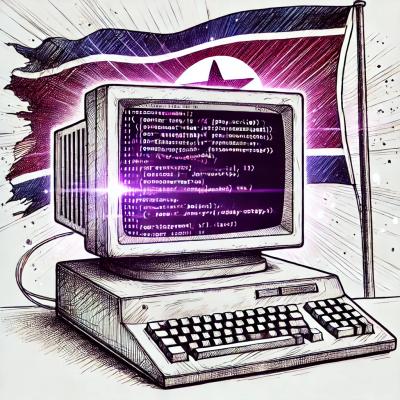
Security News
TypeScript is Porting Its Compiler to Go for 10x Faster Builds
TypeScript is porting its compiler to Go, delivering 10x faster builds, lower memory usage, and improved editor performance for a smoother developer experience.
react-particles-js
Advanced tools
Since this library is not actively maintained, it has been deprecated in favor of react-tsparticles which shares the same core functionality of this library.
Particles React component, using tsParticles.
Checkout the demo page.
npm install react-particles-js || yarn add react-particles-js
Example:
import Particles from 'react-particles-js';
class App extends Component{
render(){
return (
<Particles />
);
};
}
| Prop | Type | Definition |
|---|---|---|
| width | string | The width of the canvas. |
| height | string | The height of the canvas. |
| params | object | The parameters of the particles instance. |
| style | object | The style of the canvas element. |
| className | string | The class name of the canvas wrapper. |
| canvasClassName | string | the class name of the canvas. |
| particlesRef | object | The instance of the particles container |
Find your parameters configuration here.
Demo: Polygon mask demo.
Available only since version v2.4.0 (available with npm install react-particles-js@2.4.0).
<script src="https://cdn.rawgit.com/progers/pathseg/master/pathseg.js"></script>
import Particles from 'react-particles-js';
class App extends Component{
render(){
return (
<Particles
params={{
polygon: {
enable: true,
type: 'inside',
move: {
radius: 10
},
url: 'path/to/svg.svg'
}
}} />
);
};
}
polygon.enable (boolean; default false) - Whether the mask must be enabledpolygon.url (string) - The url of the svgpolygon.type ('inline' | 'inside' | 'outside'; default 'inline') - The particles should be drawn over, inside or outside the svg pathpolygon.scale (number; default 1) - How much the svg must be scaledpolygon.move.radius (number; default 10) - The radius which will be used as particles movement boundarypolygon.move.type ('path' | 'radius'; default 'path') - Whether the particles should be bounded to the polygon path or to a given radius, while moving with polygon.type = 'outside' or polygon.type = 'inside'polygon.inline.arrangement ('random-point' | 'per-point' | 'one-per-point' | 'random-length' | 'equidistant'; default 'one-per-point') - Whether the particles disposition with polygon.type = 'inline' should be random or following some criteria; 'one-per-point' overrides the number of the particles drawn.polygon.draw.enable (boolean; default false) - Whether the shape should be drawn on the canvaspolygon.draw.stroke.width (number; default .5) - Draw strokepolygon.draw.stroke.color (string; default 'rgba(255, 255, 255, .1)') - Draw stroke colorLets you use multiple images as particle shape.
Demo: Multiple images demo.
Available only since version v2.4.0 (available with npm install react-particles-js@2.4.0).
import Particles from 'react-particles-js';
class App extends Component{
render(){
return (
<Particles
params={{
particles: {
shape: {
type: 'images',
image: [
{src: 'path/to/first/image.svg', height: 20, width: 20},
{src: 'path/to/second/image.jpg', height: 20, width: 20},
]
}
}
}} />
);
};
}
Adds blurred shadow to the lines of the canvas.
import Particles from 'react-particles-js';
class App extends Component{
render(){
return (
<Particles
params={{
particles: {
line_linked: {
shadow: {
enable: true,
color: "#3CA9D1",
blur: 5
}
}
}
}}
style={{
width: '100%',
backgroundImage: `url(${logo})`
}}
/>
);
};
}
Starting with v3.0.0 the react-particles-js library has switched its core functionality using tsParticles. This may introduce breaking changes but will allow the library be maintained more frequently.
The main purpose of this library is to be simple to use, also allowing to be customized.
To accomplish this, an experimental branch has been created in order to provide a boilerplate for the next version of this library.
A live demonstration can be found here.
In this simple demo website, a new approach has been used, giving the application a powerful composability.
Issues concerning best practices, usability, backward compatibility and performances are raising, so..
FAQs
Reactified particles.js
The npm package react-particles-js receives a total of 2,338 weekly downloads. As such, react-particles-js popularity was classified as popular.
We found that react-particles-js demonstrated a not healthy version release cadence and project activity because the last version was released a year ago. It has 1 open source maintainer collaborating on the project.
Did you know?

Socket for GitHub automatically highlights issues in each pull request and monitors the health of all your open source dependencies. Discover the contents of your packages and block harmful activity before you install or update your dependencies.

Security News
TypeScript is porting its compiler to Go, delivering 10x faster builds, lower memory usage, and improved editor performance for a smoother developer experience.

Research
Security News
The Socket Research Team has discovered six new malicious npm packages linked to North Korea’s Lazarus Group, designed to steal credentials and deploy backdoors.

Security News
Socket CEO Feross Aboukhadijeh discusses the open web, open source security, and how Socket tackles software supply chain attacks on The Pair Program podcast.